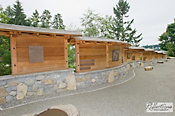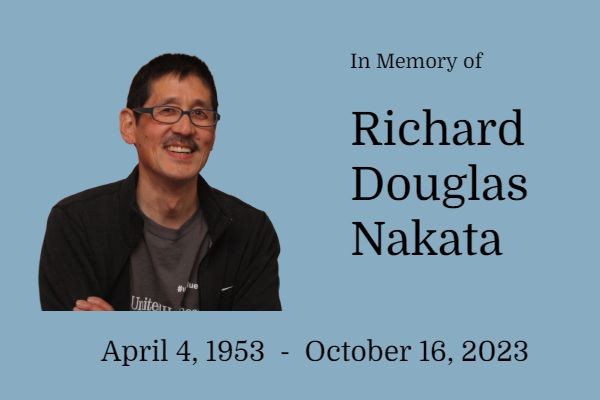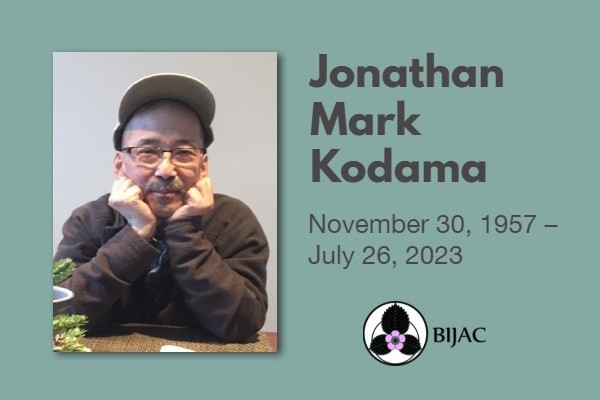
Nidoto Nai Yoni, translated as “Let It Not Happen Again” is the motto and mission of the Bainbridge Island Japanese American Exclusion Memorial. The Memorial is located on the site of the former Eagledale ferry dock on Bainbridge Island, Washington. On March 30, 1942, two hundred twenty–seven men, women and children — two–thirds of them American citizens — were forcibly removed from their homes, rounded up by US Army soldiers armed with rifles fixed with bayonets and boarded a ferry to Seattle.
The Memorial is administered by the Bainbridge Island Japanese American Exclusion Memorial Association (BIJAEMA). BIJAEMA is a public non–profit corporation that is a separate entity from BIJAC, however both organizations work closely together and share several board members. For more information visit BIJAEMA’s Facebook page, or the BIJAEMA Blog.
Request a TourOrigin and Message
In 2000, the Bainbridge Island WWII Nikkei Internment and Exclusion Memorial Committee was formed to create a meaningful and site–specific memorial to honor those who endured years of “immeasurable suffering.”
Based on a partnership between the Bainbridge Island/North Kitsap Interfaith Council and the Bainbridge Island Japanese American Community (BIJAC), the committee is guided by a vision for an evocative and contemplative memorial that will have the power to instruct future generations about the injustices of the past and to be forever vigilant about the fragility of assumed rights.
The memorial commemorates and honors the strength and perseverance of the people involved — both those exiled and their island neighbors — and brings awareness of the powerful capacity of human beings and a nation to heal, forgive and care for one another.
Design Elements
Located at the historic site of the first forced removal and exclusion of Japanese Americans in WWII, the heart of the Bainbridge Island Japanese American Exclusion Memorial is the 276-foot long Memorial Wall displaying the names and ages of each of the island’s 276 Japanese American residents in 1942. Five terracotta friezes represent their unique American story of immigration, inclusion, exclusion, incarceration, and welcoming return.
The memorial project was designed by nationally award-winning architect and island resident Johnpaul Jones of the Seattle firm Jones and Jones. In 2014 Jones became the first architect to be awarded the National Humanities Medal by President Barrack Obama. In 2018 Jones was named a “Bainbridge Island Treasure.”
Progress and Future Steps

Phase One of the four construction phases created the entry road and parking lots for Pritchard Park and the memorial site. Pathways and wooden boardwalks meander through the memorial site’s forest, wetlands and developed stormwater pond. The Alaskan Yellow Cedar timber-framed pavilion and entry and exit gates were designed by John Buday of Cascade Crest Designs, who oversaw their hand-built, volunteer construction by the Timber Framers Guild.
Phase Two created the 276-foot long Memorial Wall made of old growth red cedar and granite, built by the Drury Construction Company. Local Seattle-area artist Steve Gardner created the terracotta displays honoring the Japanese American families and telling their American story.

Phase Three is the Exclusion Departure Deck, a 45-foot cantilevered wood structure at the end of the Memorial Wall. Extending over the beach and the harbor’s high tide at the location of the historic Eagledale Ferry Dock, the deck will offer visitors the interpretive experience of leaving the island like the Japanese Americans who were forcibly removed.
Phase Four will be an open air plaza featuring an environmentally designed, timber-framed Visitors Center, a circular outdoor amphitheater, and a curved low wall with bench seating separating the plaza from the entrance to the Memorial Wall. Fundraising continues for this final phase.
The Bainbridge Island Japanese American community serves as the figurative and literal bookends of the WWII exclusion and incarceration story. They were the first to be forcibly removed; the first community to be incarcerated in the Manzanar concentration camp; then upon moving from Manzanar, the last to occupy a block of barracks in one of the last concentration camps to be completed, Minidoka in southern Idaho, .
A satellite unit of the Minidoka National Historic Site, the memorial’s aspirational message “Nidoto Nai Yoni – Let It Not Happen Again” is a call to action to oppose fear, racism, ignorance and hysteria and to stand up, speak out and protect the civil and constitutional rights for all.
Learn about our Milestone Events


